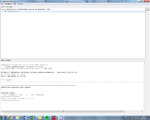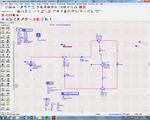ozd
Newbie level 3
Hi everyone,
I am trying to do rectenna at 1.9 Ghz with ADS, in rectifier part, i am taking "No convergence" error which is attached in figure 1, and my circuit also added in figure 2. Here is my questions;
1. What is this convergence error in ADS? What does it mean?
2. How can i fix this error?
ps. I am new with using ADS and designing Rectifier. Therefore i need help.
Thanks in advance.


I am trying to do rectenna at 1.9 Ghz with ADS, in rectifier part, i am taking "No convergence" error which is attached in figure 1, and my circuit also added in figure 2. Here is my questions;
1. What is this convergence error in ADS? What does it mean?
2. How can i fix this error?
ps. I am new with using ADS and designing Rectifier. Therefore i need help.
Thanks in advance.

